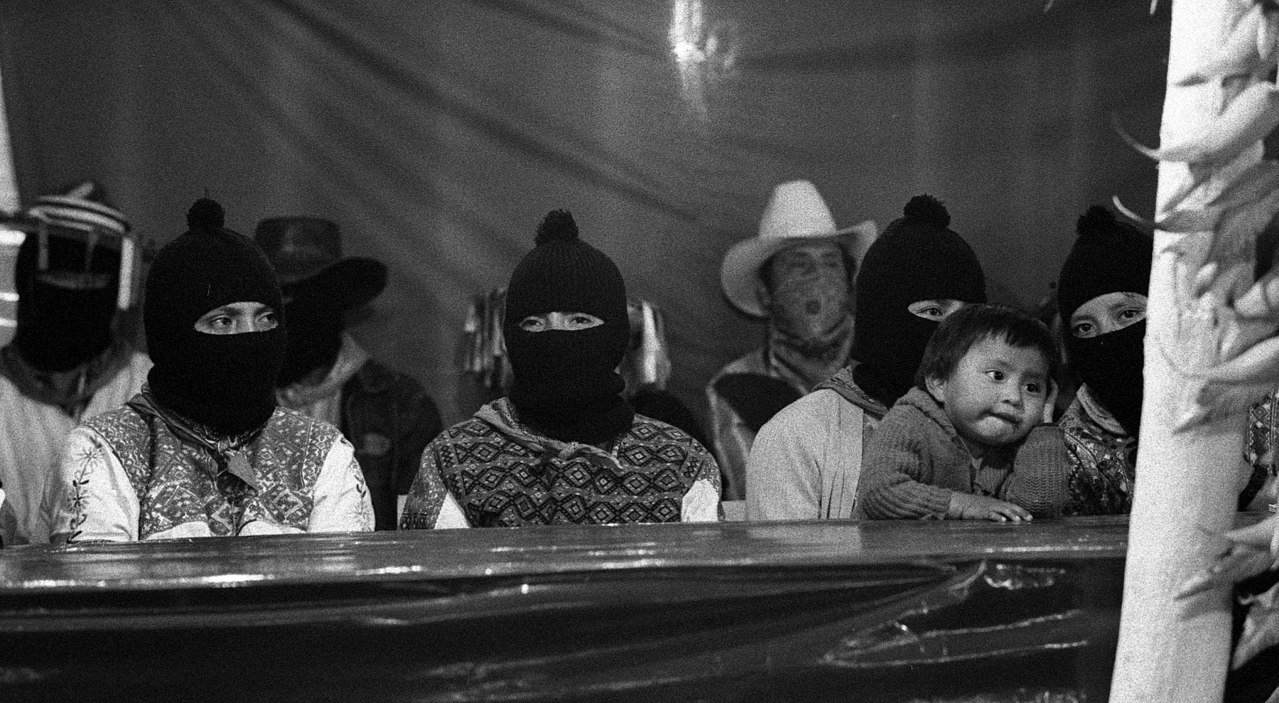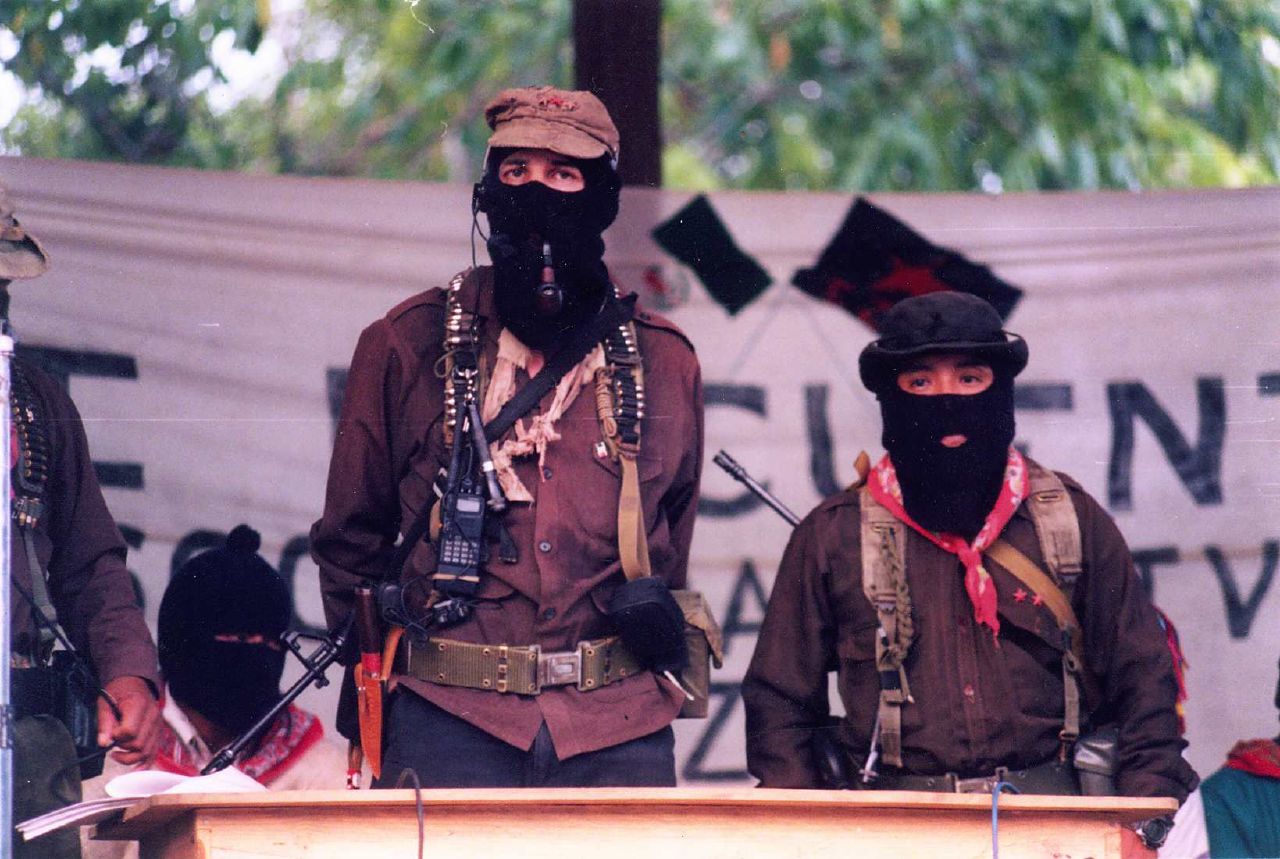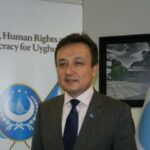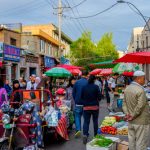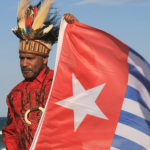Zapatista Indigenous Autonomous Zones Threatened by Militarisation
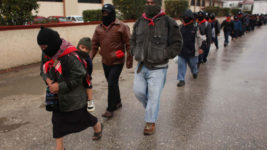
A group of leading intellectuals from around the globe have penned an open letter calling out the Mexican government’s increased militarisation in the south-eastern state of Chiapas, as they’re concerned deployed troops could turn against the Zapatista Army of National Liberation (EZLN).
The Zapatistas are a far-left libertarian-socialist community that controls a substantial amount of Chiapas, which straddles the border with Guatemala. The Indigenous rebellion movement began its control of the area when it declared war on the Mexican government in 1994.
Mexican president André Manuel López Obrador sent National Guard troops to the nation’s southern border last month to prevent Central American immigrants crossing en route to the US, as the Trump administration threatened him with debilitating tariffs if no action was taken.
Signed by US political critic Noam Chomsky, Indian writer Arundhati Roy and Mexican journalist Juan Villoro, the open letter warns that the move threatens the Zapatistas’ quarter century fight for autonomy, which has been “an example of freedom in a world shackled by fear”.
And the document further raises questions about whether the troops stationed in “the territories of the Zapatista communities” will be able to “distinguish between crime and resistance”, as well as “cruelty and legitimate rebellion”.
Additional military intrusions
“Both the EZLN and the National Indigenous Congress (CNI) have commented on the National Guard in their communiqués,” said Chiapas Support Committee founding member Mary Ann Tenuto. “They see the National Guard as a militarisation of the entire country.”
The CNI is a body that represents Indigenous groups from across Mexico. The EZLN called for its formation in 1996. Around 15 percent of Mexico’s total population is made up of Indigenous peoples, most of whom live in the southern regions of the country.
The recently established National Guard was formed to fight crime and violence throughout Mexico. So, its members have been deployed nationwide. And the task of controlling the borders in both the north and south was not part of its original mandate.
“Chiapas has been and continues to be militarised by the Mexican army and the federal police, especially in Zapatista territory,” Ms Tenuto explained, adding that the EZLN has released several communiqués regarding increased army patrols of and threats to Zapatista communities.
“Exactly how the National Guard will fit into the present scenario remains to be seen,” she told Sydney Criminal Lawyers.
¡Ya basta! Enough is enough!
On 1 December 1994, around 3,000 masked Zapatista soldiers emerged from the jungle and rural villages to occupy seven towns, including the city of San Cristobal de las Casas. This was the same day that Mexico entered into the NAFTA free trade agreement with the US and Canada.
Comprised of Tzeltal, Tzozil, Chol, Tjolobal, Zoque, Kanjobal and Mame peoples, the Zapatista movement was rising up against 500 years of colonial rule, political marginalisation and extreme poverty. And it was fuelled by an ideology based on anarchism, Mayan tradition and Marxism.
For its first 20 years, the movement was led by the secretive Subcomandante Marcos. He asserted that the NAFTA agreement was a “death certificate for the Indian peoples in Mexico”, who were “disposable” as far as the nation’s government was concerned.
After eleven days of fighting, the rebels and the Mexican government declared a ceasefire and began negotiations. And two years later, the San Andres Peace Accords were established, recognising the self-determination rights of Zapatista communities.
The initial success of the 1994 peasant uprising has been put down in part to the fact that it was carried out in the early days of the internet, and the Zapatistas were able to garner the support of a network of international non-government organisations due to its online presence.
Collective ownership
Today, 25 years after the initial rebellion, the Zapatista communities are still operating as now well-established autonomous entities, with a population of around 300,000 people, who are benefiting from their own doctors, teachers and currency.
“The Zapatista communities operate autonomously from the three levels of constitutional government and political parties,” Ms Tenuto continued. “The communities are self-managed through community assemblies.” And elected officials govern via the direction of them.
There are 55 Rebel Zapatista Autonomous Municipalities throughout Chiapas, with 50,000 families living within them. Tenuto explained that work is carried out collectively within the communities. And this includes economic activity.
“The greatest benefit of living in an autonomous community is the dignity that accompanies self-determination,” Ms Tenuto emphasised. “Social benefits include running water, electricity, improved roads, community schools and clinics, hospitals and loan funds.”
The fight continues
Although the movement had previously stated it would never be involved in federal politics, the Zapatistas and the CNI elected Nahua Indigenous healer María de Jesús Patricio Martínez as their presidential candidate for the 2018 Mexican elections.
Following the national vote and the win by López Obrador, the EZLN announced a new era in its “war against oblivion”, as it called out the new government over its plans to undertake huge development projects within Zapatista territories, as well as its disinformation campaign against the movement.
Ms Tenuto explained the EZLN is also a member of the National Indigenous Governing Council. And she said most of the Indigenous communities belonging to it are have their lands either seized or damaged due to “drug war violence, development projects and corporate extractive endeavours”.
The movement’s main focus now, she continued, is to strengthen the council in order to “resist the dispossession and displacement of Indigenous communities, and to maintain their Indigenous cultures and way of life that protect their environment”.
Pushed to the sides
Those who signed the open letter said they’re aware of “a growing process of hostility toward authentic, historic and legitimate projects of resistance that oppose” major development projects throughout Mexico.
The letter authors further raised concerns over recent reports of National Indigenous Governing Council members being murdered. And they’re worried the new government will marginalise Indigenous peoples, as its predecessors have also.
“The world is watching with its eyes and its heart what is happening in Mexico and in Chiapas,” the authors concluded. “Stop the war against the Zapatistas and the Indigenous peoples of Mexico.”
